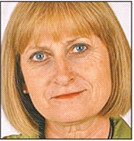
"I cannot tell my story without recalling a long way back." - Hermann Hesse.
My literary imagination was first kindled by the fairy stories of Hans Christian Andersen. While my mother read aloud the plight of the Brave Tin Soldier who only had one leg and the duckling, who was ostracised by the other ducks because he was different in appearance, my compassion for these childhood heroes was heightened by the beautiful illustrations of the stories.
When I was young, it was a treat to wake up early in the morning to find a pencil-outlined sketch of a character from one of my childhood books, drawn by my mother, waiting for me to colour in.
Over time, imported picture books such as Pookie, a tale about a little white rabbit, and other anthropomorphic renderings made their way onto my bookshelf and became firm friends. I still have a few remaining childhood books, which I sometimes read.
Those early years were a fertile season on my literary journey and I often wonder if it explains why I have published many books in the picture-book genre. For me, the illustrations are as important as the words on the page, because they are often a child's first exposure to fine art.
When I'm writing for this age group I have a strong visual image in my mind, but when the text is released to the illustrator, I'm open to their interpretation of the story. Sometimes their illustrations are very different from how I visualised the story, but I'm intrigued by the artist's interpretation.
An illustrator's challenge is not to duplicate the words on the page, but to provide images which enhance and complement the words. I've been so fortunate to work with superb South African illustrators like Joan Rankin, Kathy Pienaar, Marjorie van Heerden and Jude Daly, who won the Katrine Harries award for her illustrations of my book, The Gift of the Sun.
Through my studies in African Languages (I studied isiXhosa at Rhodes University) I became exposed to the oral tradition, and _ when South African publishers called for stories with local content I drew on African folklore and folk tales, publishing collections of folk tales and tales which I invented myself. It's almost as though the folk tales replaced the fairy tales in significance because they were rooted in the African landscape, unlike their counterparts which originated in the northern hemisphere.
As my own children grew older, I wrote progressively for older age groups and the illustrations became less significant.
Stories can unite generations, forming the link between ages. A mother or father will want to read a book to their child which they enjoyed as a child. A grandmother will indulge her love of reading, acquired over many years, by telling a story to her grandchildren or reading to them.
It is so important to hear words read aloud or for young readers to see the flow of language on the page. That is why the reading initiative, Nal'ibali, with its emphasis on reading, is so important.
Dianne (Hay) Stewart grew up in Port Elizabeth and attended Collegiate School for Girls.
At Rhodes University she obtained a BA degree, _ then did an Honours degree in African languages before completing her MA in South African literature (University of KZN) and her MA in creative writing (UCT).
She is the author of 30 books, including The Gift of the Sun, which was translated into Danish, Norwegian, Swedish, French, isiXhosa, isiZulu, Afrikaans, Spanish and South Korean.
The Zebra's Stripes and other African Animal Stories was published by Random House Struik. Her youth novel, Chasing the Wind, published by Oxford University Press, was prescribed in schools.
She won the MML Young Africa Award for her short story, The Crash.
Dianne compiled and edited Durban in a Word (Penguin 2008), a collection of writing about Durban, and Wisdom from Africa, a collection of African proverbs.
Her latest book is Who's Afraid of the Dark (Jacana, 2011).
Picture credit: The Herald
- This article was published on The Herald.
